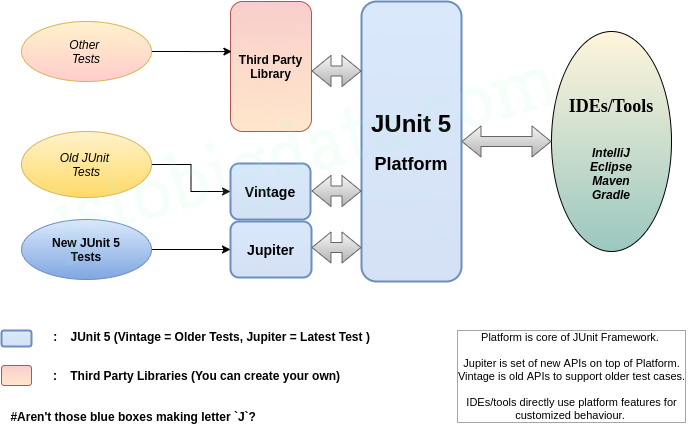The Final Frontier of Java Unit Testing: Conquering Static Methods with Mockito
For years, Java developers have shared a common testing challenge: code that relies on static methods. These class-level methods, while useful, have historically been a significant hurdle for creating clean, isolated unit tests. The standard dependency injection and mocking patterns simply don’t apply, forcing developers into complex workarounds. This often involved using heavy-handed tools like PowerMock, which manipulated classloaders and could lead to fragile, slow, and unpredictable tests. The alternative was often to refactor production code solely for testability, a compromise that never sits well. This long-standing issue has been a frequent topic in Java news and developer forums.
However, the landscape has dramatically shifted. In a significant piece of Mockito news that has resonated throughout the Java ecosystem news, the Mockito framework introduced a powerful, clean, and integrated way to mock static methods. Starting with version 3.4.0, this capability is available through the `mockito-inline` artifact, Mockito’s inline mock maker engine. This evolution marks a pivotal moment, empowering developers to write more straightforward and robust tests for legacy code, third-party libraries, and JDK classes without resorting to cumbersome workarounds. This article provides a comprehensive guide on how to leverage this game-changing feature, from basic setup to advanced techniques and best practices.
Core Concepts: From Impossible to Effortless
To appreciate the significance of this feature, it’s essential to understand why static methods were traditionally difficult to mock and how Mockito’s new approach solves the problem elegantly.
The Old Challenge with Static Invocations
Standard mocking frameworks, including earlier versions of Mockito, operate on instances of objects. You create a mock object, which is essentially a dynamic proxy or subclass of the real object, and then you inject this mock into the class you’re testing. When the class under test calls a method on the injected dependency, it’s actually calling the method on your mock, which you control.
Static methods bypass this entire mechanism. A call like IdGenerator.generate() is a direct invocation on the `IdGenerator` class itself. There is no instance to replace or inject. This tight coupling made it impossible to intercept the call without resorting to bytecode manipulation or custom classloaders, which was the domain of tools like PowerMock. While effective, this approach often came with a performance penalty and could conflict with other tools like code coverage agents, creating a maintenance headache.
The Modern Solution: `Mockito.mockStatic()`
The modern Mockito approach, powered by the `mockito-inline` engine, uses a Java agent to instrument the code at runtime, allowing it to intercept these static calls without the complexities of custom classloaders. The API is designed to be explicit and safe, encouraging developers to scope the static mock as narrowly as possible.
The primary entry point is the `Mockito.mockStatic(Class<T> classToMock)` method. This method returns a `MockedStatic<T>` object, which controls the mock for the duration of its life. The best practice, and the most common way to use it, is within a `try-with-resources` block. This ensures the static mock is active only for the code inside the block and is automatically closed afterward, preventing mock “leaks” that could interfere with other tests.
Let’s look at a simple example. Imagine a utility class that generates unique IDs.

// Utility class with a static method
public final class IdGenerator {
private IdGenerator() {}
public static String generate() {
// In reality, this might generate a complex UUID
return "id-" + System.currentTimeMillis();
}
}
// Service that uses the utility
public class OrderService {
public Order createOrder(String product) {
String orderId = IdGenerator.generate();
return new Order(orderId, product);
}
}Testing `OrderService` is tricky because `IdGenerator.generate()` is non-deterministic. Here’s how you can test it with static mocking:
import org.junit.jupiter.api.Test;
import org.mockito.MockedStatic;
import static org.junit.jupiter.api.Assertions.assertEquals;
import static org.mockito.Mockito.mockStatic;
class OrderServiceTest {
@Test
void testCreateOrder_usesGeneratedId() {
// Arrange
String expectedId = "fixed-test-id-123";
// Use try-with-resources to scope the static mock
try (MockedStatic<IdGenerator> mockedStatic = mockStatic(IdGenerator.class)) {
// Stub the static method to return a predictable value
mockedStatic.when(IdGenerator::generate).thenReturn(expectedId);
// Act
OrderService orderService = new OrderService();
Order order = orderService.createOrder("Laptop");
// Assert
assertEquals(expectedId, order.getId());
}
}
}In this test, the `try-with-resources` block ensures that the mock for `IdGenerator` is active only within its scope. Inside, we use the `mockedStatic` instance to define the behavior of the `generate` method. When `orderService.createOrder()` is called, the invocation of `IdGenerator.generate()` is intercepted and returns our `expectedId`, making the test deterministic and reliable.
Implementation Details: Setting Up and Practical Examples
To start using static method mocking, you first need to configure your project correctly. This involves adding the `mockito-inline` dependency, which replaces the need for `mockito-core`.
Project Configuration
Whether you’re using Maven or Gradle, the setup is straightforward. You must include the `mockito-inline` artifact. It transitively includes `mockito-core`, so you don’t need to declare both.
For Maven news followers, here is the `pom.xml` dependency:
<!-- pom.xml -->
<dependencies>
<!-- Other dependencies like JUnit 5 -->
<dependency>
<groupId>org.junit.jupiter</groupId>
<artifactId>junit-jupiter-api</artifactId>
<version>5.10.0</version>
<scope>test</scope>
</dependency>
<!-- Add mockito-inline for static mocking capabilities -->
<dependency>
<groupId>org.mockito</groupId>
<artifactId>mockito-inline</artifactId>
<version>5.2.0</version> <!-- Use the latest version -->
<scope>test</scope>
</dependency>
</dependencies>For those following Gradle news, here is the `build.gradle` configuration:
// build.gradle
dependencies {
// Other dependencies
testImplementation 'org.junit.jupiter:junit-jupiter-api:5.10.0'
testRuntimeOnly 'org.junit.jupiter:junit-jupiter-engine:5.10.0'
// Add mockito-inline for static mocking capabilities
testImplementation 'org.mockito:mockito-inline:5.2.0' // Use the latest version
}Real-World Example: Controlling Time with `LocalDateTime`
A classic testing problem is dealing with `LocalDateTime.now()`, which introduces non-determinism. Any code that relies on the current time is inherently difficult to test across different moments. This is a perfect use case for static method mocking.
Consider a service that logs events with a timestamp.
import java.time.LocalDateTime;
public class EventService {
public Event createLoginEvent(String username) {
// The call to the static method LocalDateTime.now() makes this hard to test
LocalDateTime timestamp = LocalDateTime.now();
String eventData = "User '" + username + "' logged in.";
return new Event(eventData, timestamp);
}
}To test this, we can mock `LocalDateTime.now()` to return a fixed point in time. This is a great example for developers following Java 11 news or Java 17 news, as the Date-Time API is a core part of modern Java.

import org.junit.jupiter.api.Test;
import org.mockito.MockedStatic;
import java.time.LocalDateTime;
import static org.junit.jupiter.api.Assertions.assertEquals;
import static org.mockito.Mockito.mockStatic;
class EventServiceTest {
@Test
void testCreateLoginEvent_usesCurrentTimestamp() {
// Arrange
LocalDateTime fixedTime = LocalDateTime.of(2023, 10, 27, 10, 0, 0);
// Act & Assert
try (MockedStatic<LocalDateTime> mockedTime = mockStatic(LocalDateTime.class)) {
mockedTime.when(LocalDateTime::now).thenReturn(fixedTime);
EventService eventService = new EventService();
Event event = eventService.createLoginEvent("testuser");
assertEquals(fixedTime, event.getTimestamp());
assertEquals("User 'testuser' logged in.", event.getData());
}
}
}This test is now perfectly deterministic. The `EventService` believes the current time is exactly what we told it, allowing us to assert the timestamp with precision. This technique is invaluable in Spring Boot news, where services often handle time-sensitive data.
Advanced Techniques: Verification, Argument Matchers, and Voids
Mockito’s static mocking capabilities go beyond simple return value stubbing. You can also verify invocations, use argument matchers, and handle `void` methods, just as you would with regular instance mocks.
Verifying Static Method Invocations
Sometimes, you don’t care about the return value of a static method, but you need to ensure it was called. For example, you might want to verify that a static logger was invoked. The `MockedStatic` object provides a `verify()` method for this purpose.
// A static logger utility
public final class AuditLogger {
public static void log(String message) {
// Logs the message to a secure audit trail
System.out.println("AUDIT: " + message);
}
}
// A service that uses the logger
public class PaymentService {
public void processPayment(double amount) {
// ... payment processing logic ...
AuditLogger.log("Payment processed for amount: " + amount);
}
}
// The test
import org.junit.jupiter.api.Test;
import org.mockito.MockedStatic;
import static org.mockito.Mockito.*;
class PaymentServiceTest {
@Test
void testProcessPayment_logsAuditEvent() {
try (MockedStatic<AuditLogger> mockedLogger = mockStatic(AuditLogger.class)) {
// We don't need to stub a return value for a void method,
// but we need the mock to be active to verify calls.
PaymentService paymentService = new PaymentService();
paymentService.processPayment(199.99);
// Verify that the static log method was called exactly once with the expected message
mockedLogger.verify(
() -> AuditLogger.log("Payment processed for amount: 199.99"),
times(1)
);
}
}
}Using Argument Matchers
Just like with regular mocks, you can use argument matchers (`any()`, `anyString()`, `eq()`, etc.) to make your stubs and verifications more flexible. This is crucial when the exact arguments are complex or irrelevant to the test’s focus.
// In the PaymentServiceTest from above
@Test
void testProcessPayment_logsAnyAuditEvent() {
try (MockedStatic<AuditLogger> mockedLogger = mockStatic(AuditLogger.class)) {
PaymentService paymentService = new PaymentService();
paymentService.processPayment(50.0);
// Verify that log was called with any string that starts with "Payment processed"
mockedLogger.verify(() -> AuditLogger.log(startsWith("Payment processed")));
}
}Best Practices and Common Pitfalls
While static method mocking is a powerful tool, it should be used judiciously. Following best practices ensures your tests remain clean, maintainable, and effective. This is crucial Java wisdom tips news for any developer looking to improve their testing strategy.
Best Practices
- Scope Mocks Tightly with `try-with-resources`: This is the most critical practice. It guarantees that the static mock is active only for a specific test method and is automatically cleaned up, preventing side effects that could cause other tests to fail.
- Prefer Dependency Injection (DI): Static mocking is not a substitute for good object-oriented design. Whenever you have control over the code, prefer designing your classes to accept dependencies through their constructors (DI). This makes them inherently more testable. Reserve static mocking for situations you cannot change, such as legacy code, third-party libraries (e.g., `java.nio.file.Files`), or core JDK classes (`LocalDateTime`).
- Be Specific: Mock only the static methods you need to control. If a class has multiple static methods, avoid a blanket mock if possible. Using `Mockito.CALLS_REAL_METHODS` as the second argument to `mockStatic` can be helpful, as it allows you to mock one method while letting others execute their real implementations.
Common Pitfalls
- Forgetting the `mockito-inline` Dependency: The most common setup error. If you only have `mockito-core`, calls to `mockStatic` will result in an exception explaining that the inline mock maker is not active.
- Leaking Mocks: If you don’t use `try-with-resources` and forget to manually call `close()` on the `MockedStatic` object, the mock can persist and affect subsequent tests. This leads to flaky and unpredictable test suite runs.
- Over-mocking Your Own Code: If you find yourself frequently mocking static methods from your own application’s domain logic, it might be a “code smell.” This often indicates that the logic is misplaced and should be part of an instantiable service or component that can be properly injected and mocked.
Conclusion: A New Era for Java Testing
The introduction of static method mocking directly into the Mockito framework is more than just a new feature; it’s a fundamental improvement to the Java testing ecosystem. It addresses a long-standing pain point with an elegant, safe, and well-integrated solution. By including the `mockito-inline` dependency, developers can now tackle legacy code and difficult-to-test third-party utilities with confidence, eliminating the need for more complex and intrusive tools.
The key takeaways are clear: use `Mockito.mockStatic()` within a `try-with-resources` block for safety, prefer dependency injection for your own code, and reserve this powerful technique for cases where it’s truly necessary. As the Java platform continues to evolve with updates like Java 21 news and projects like Project Loom, it’s reassuring to see the tooling ecosystem, led by staples like Mockito and JUnit, evolve right alongside it, providing developers with the modern tools they need to build and maintain high-quality software.

